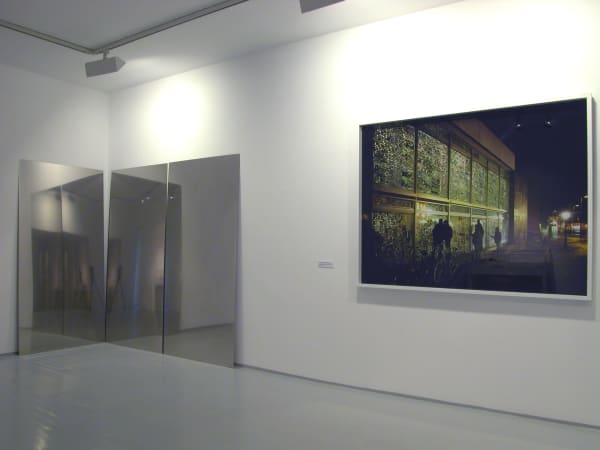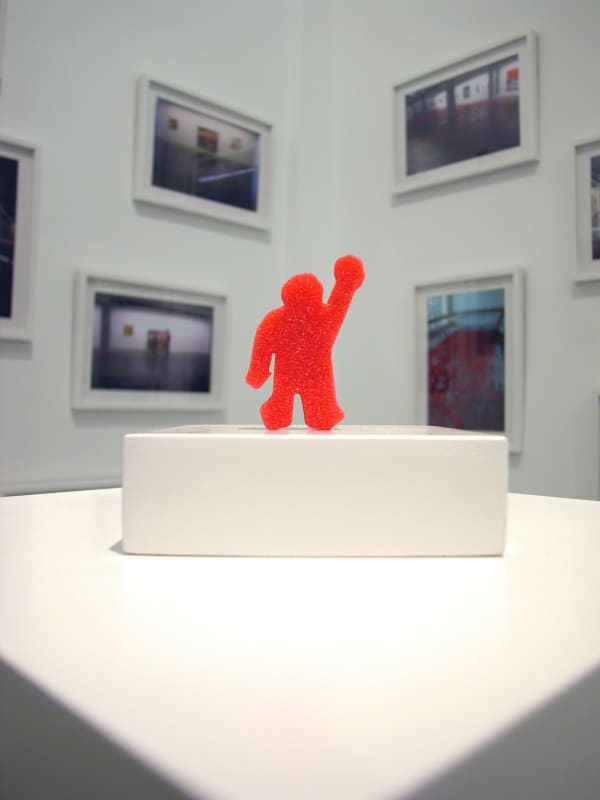Minevra Street: Serkan Özkaya
Serkan Özkaya puts out keystones of his ten-year-old career on show at Galerist, Istanbul under the title: ‘Minerva Street’. The projects documented here had been realized in Istanbul, Utrecht, Paris, and New York; and what can be said of all of them, is that they are both an attack and a homage to an inexhaustable subject, a Bermuda triangle of ideas, which are known as the One, the Copy and the Multiple.
One of Özkaya’s more popular inventions, ‘What An Art Gallery Should Actually Look Like’ (2000), an installation of 30,000 donated slides, lightboxed spectacularly through the grand façade of Kazım Taşkent Gallery, finds its much anticipated re-presentation on the gallery walls, as ‘Pablo Picasso at MoMA’ (1998), the infamous video, where Özkaya, the handicapped Art Lover, pays a visit to the Mademoiselle d’Avignon wearing a facemask, will undoubtedly please fans who have been missing the sight of the master.
Yet another highlight of the survey is the correspondence between Özkaya and Pierre Rosenberg, who was then the Director of the Louvre Museum (1996). In his letter, Özkaya suggests Rosenberg that he should think about hanging da Vinci’s ‘Mona Lisa’ upside down for once. Özkaya’s own model of the experiment can be viewed in the gallery. It is noted that this was the first time Özkaya placed himself in direct confrontation with Art History.
What could ‘Mona Lisa’ have in common with a matchbox?
Among the many gems of ‘Minerva Street’, are tiny artifacts Özkaya found and manipulated to such effect that not even a series of panel discussions (Picasso Talks, 2002) were enough to elaborate what had happened.
‘Proletarier Aller Laender’ (2001) was a heartthrob installation first time round in Proje 4L, Istanbul, and continued to spread its spell in the Charlottenburg Museum, Copenhagen (2002). Regarded as freebies, Özkaya’s proleterians found their way into every art lover’s private collection. Erden Kosova gives a thorough description of the ‘Proletarier...’ in an essay titled ‘Feuer und Flamme’ (2001): ‘The work was comprised of thousands of red-coloured miniature proletarians produced of plastic sponge, stuck onto the floor. They were crudely shaped models raising their left fists into the air. When stepped on, they got deformed, squeezed but after a while they could raise on their feet and flag their fists again.’
‘Minerva Street’ can be viewed at Galerist between September 11th – October 12th 2003. The exhibition is realized by the valuable contributions of Beck’s, Zebra Design Factory and Kalita.









